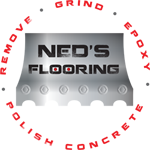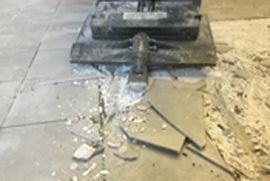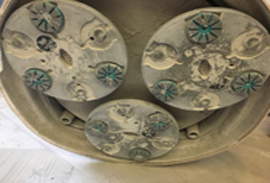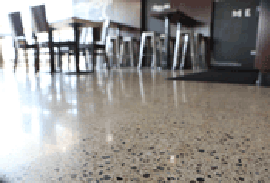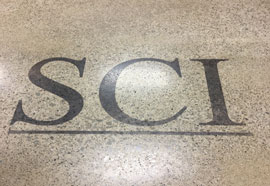From flooring removal to scraping, grinding, debris cleanup and polishing, we offer the services you need to make your floors shine. We start by pulling up your old floor, whether hardwood or ceramic, using industry-leading, environmentally friendly equipment. Once your flooring has been removed, we take the appropriate steps to prepare your surface for installation or refinishing. If you are interested in polished concrete, we can handle that process for you as well. Contact us for a for any of the following services.
Flooring Removal
Our flooring removal services begin with preparing the floor for demolition and end with a surface that is ready for a new covering. We can remove both soft and hard materials, and do so quickly and cleanly to minimize stress and downtime.
Surface Preparation
Removing the old flooring is not the only thing you have to do before you can add a new coating or refinish the old one. Preparations, such as adhesive removal and debris disposal, are necessary for proper installation of new flooring.
Polished Concrete
If you are interested in flooring that is cost-effective and durable, polished concrete is a popular option. Our advanced machinery grinds and polishes the floor for a beautiful, glossy finish. The resulting look is sleek, smooth and decorative.
Decorative Concrete
Concrete offers simple maintenance and extreme durability, but can also be the focal piece of the room. Let us create a customized, designed look in your space by staining the floor with top-quality dyes and specialized equipment.
Frequently Asked Questions
New to flooring removal and polished concrete? Review our frequently asked questions for a basic understanding of what we do and how. If you have specific questions, please feel free to reach out to us directly via email or phone at 586-298-1633.
1. Is polished concrete slippery?
In general, polished concrete is no more slippery than wood or ceramic floors. In fact, it is one of the safest flooring surfaces available if prepared properly. As long as the floors are clean and dry, slipping is not a major concern. Just be sure to wipe up spills right away.
2. How long does the flooring removal process take?
The length of the removal process varies depending on the type of flooring removed and how large the area is.
3. Do your services create a huge mess?
The process generally removes flooring in strips or pieces, but we clean up everything as we go. Even for multi-day projects, you won't have to worry about materials piling up in the area. When we are done with the job, you will have a clean, new floor with no evidence of ever having work done.
4. Do our doors need to be removed to complete the work?
No. Our equipment is designed to fit through standard doorways and elevators. This gets us in and out quicker without damaging frames.
5. What do I need to do in preparation of flooring removal?
Before we arrive to start the job, make sure the floors we are removing or refinishing are completely cleared. If you have heavier items you need help moving out of the room, we'd be happy to assist with that if requested.
6. Are the machines loud enough to interfere with productivity in an office?
Our equipment is designed for quieter operation than similar machinery, so it shouldn't be too much of a distraction if you are in other parts of the building. We are also flexible in our scheduling, so if you need the job done when no one is there, we can work out a time that is convenient for everyone.
7. What are stained and decorative concrete options?
If you would like a particular color of concrete, staining is an option. We offer a variety of colors, from opaque to translucent, so you can create a perfectly customized floor. Adding stain can give depth to a dull floor and create a subtle marbling effect.
Decorative concrete is stylized with designs that may be created from stains, stamps, imprinting or any combination of methods. Not only can you vary the coloring, but decorative concrete may also have unique texture. These design options are gaining popularity for patios, in-home flooring and pool decks.
8. What's the maintenance like on polished concrete?
Polished concrete is low-maintenance and exceptionally durable, but without occasional upkeep, it will start to lose its shine over time. Very basic maintenance includes dusting daily to remove abrasive dirt particles and wet mopping periodically with a neutral-PH floor cleaner designed to suspend dirt particles. Also make sure you clean up spills quickly so they don't get absorbed by the floor.
When the floor polish becomes dull, mechanical maintenance can improve the look. Mechanical maintenance includes anything from auto scrubbing and adding sealer and high-speed burnish, to more complicated tasks like coming and grinding to one grit level lower and then polishing back to the original level. It can be years before any mechanical maintenance is required, but it all depends on foot traffic and the amount of regular upkeep. Contact Ned's for assistance with mechanical maintenance.
9. Can all concrete be polished?
Most concrete floors can be polished, but there are a few things to consider to get the best outcomes. For new floors, make sure they are set at least 28 days before attempting to polish. If the floors are older, you can polish their surface, but will have to do some preparations first, such as filling pits and cracks and removing old coatings. Polishing concrete floors that are porous or extremely patchy may not achieve ideal results, and refinishing might be a better option.
